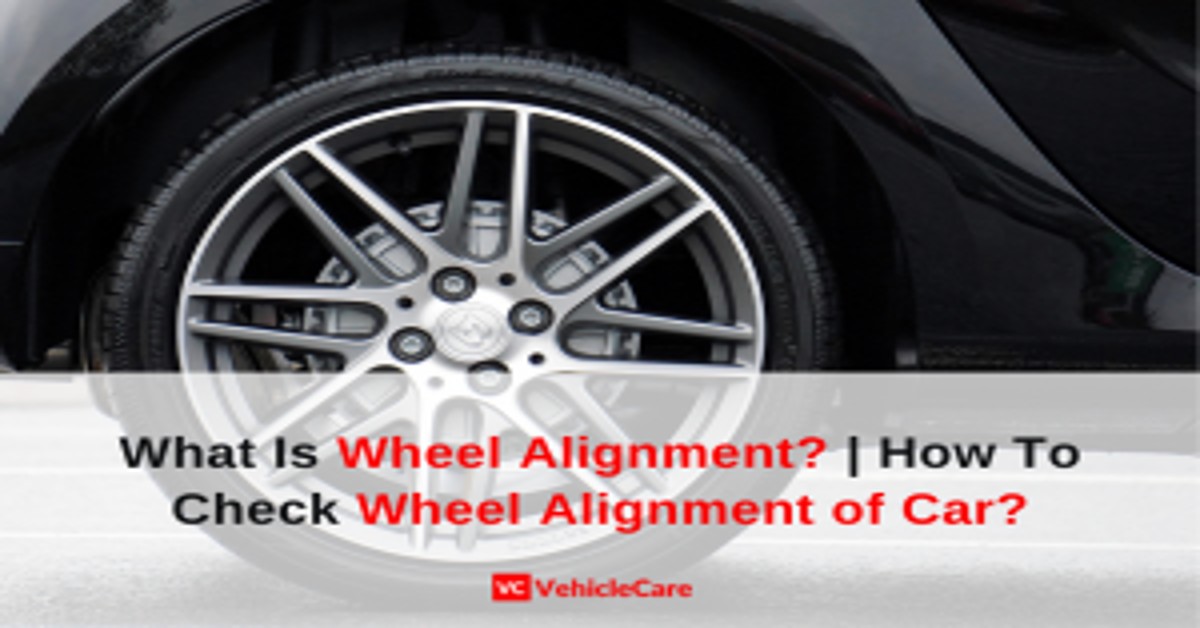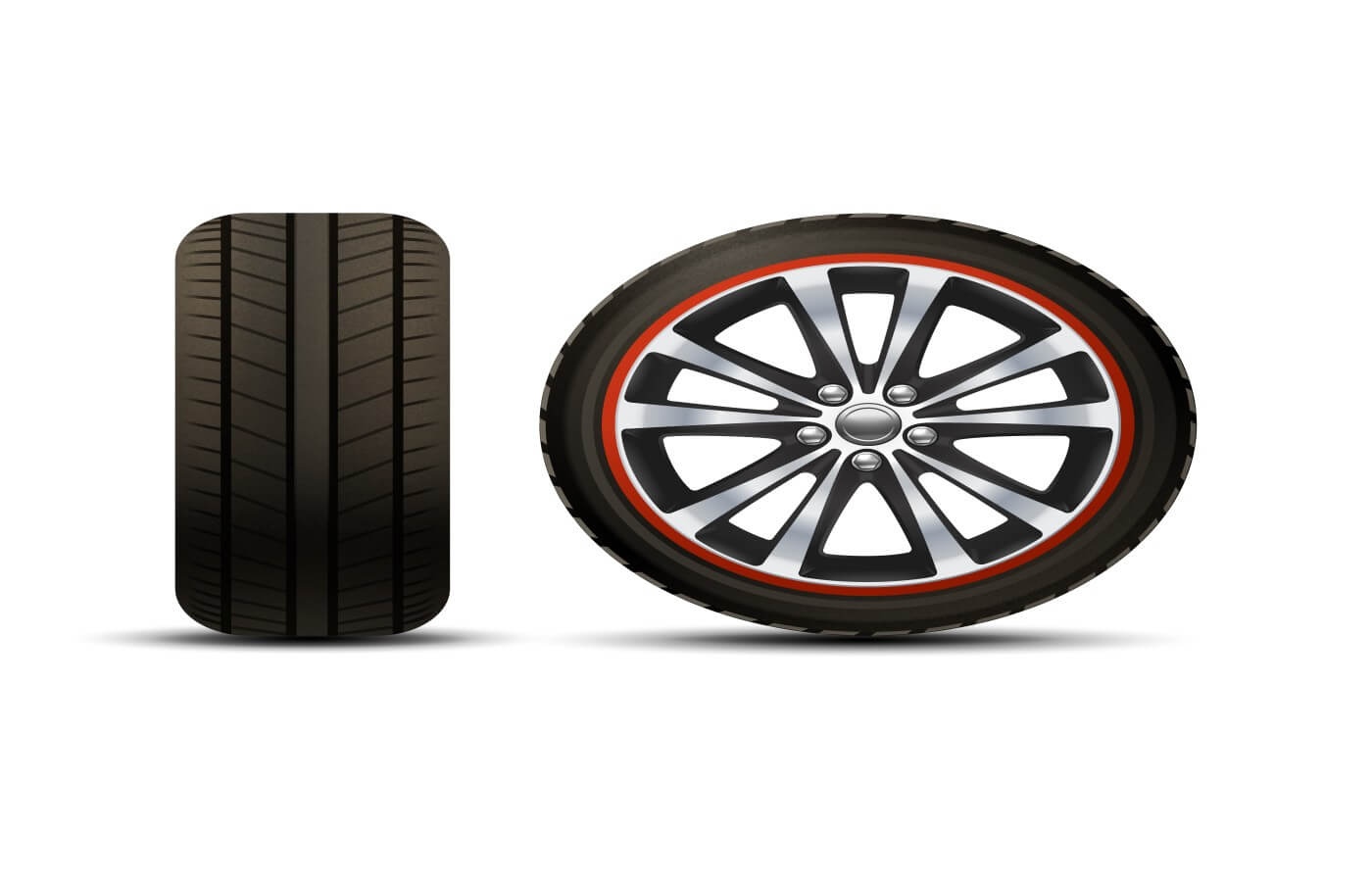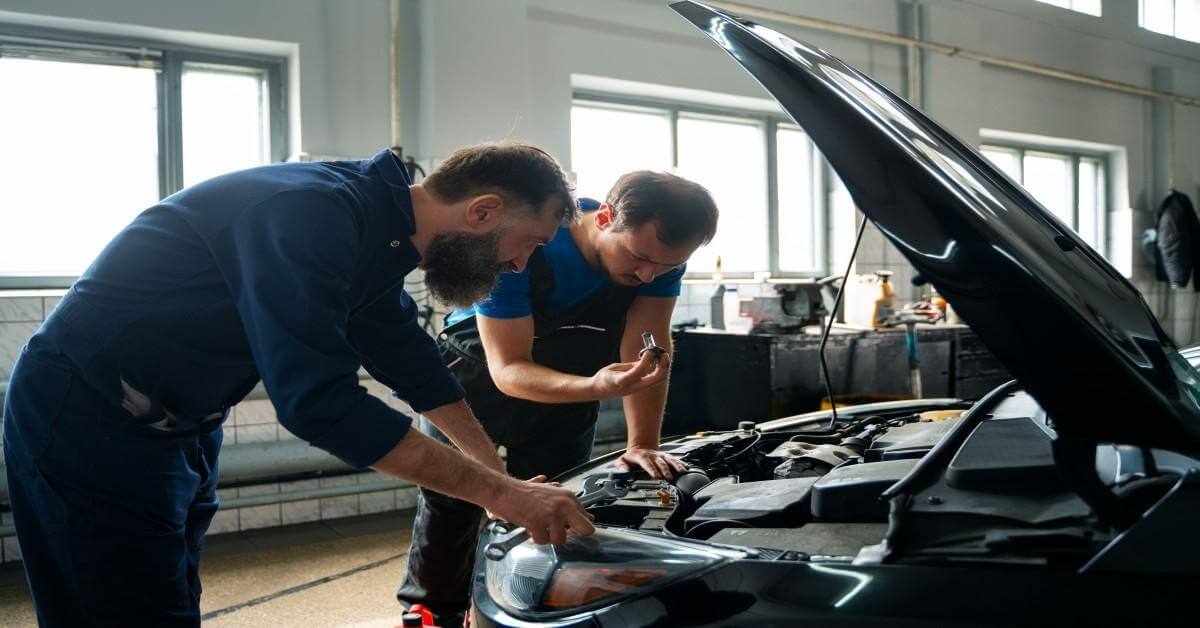Proper wheel alignment is very important for a smooth driving experience and long life of the tires. Misalignment of wheels is generally caused by potholes, minor collisions, bumps, kerbs, driving on uneven surfaces, offroading, etc. It is very dangerous to drive a car having misaligned wheels as it makes the handling poor. It can also result in tires losing their grip on the road and your car drifting out of the lane. Wheel alignment has a direct impact on steering response, handling, tire conditions, and overall driving performance. It is recommended to get your wheel alignment checked at least every 10000 km or if you experience any change in the driving or handling of your vehicle.
Table of Contents
What Is Wheel Alignment?
Wheel Alignment is basically the angles of your wheels with respect to each other and the body of the car. The angle at which the tires make contact with the road is a function of the car’s suspension.
There are generally three wheel alignment angles that determine the position of the wheels relative to each other and the car’s body.
Camber Angle
The inward or outward angle of the wheel from the vertical with respect to the ground is called the camber angle.
Positive (+ve) camber: When the top of the wheel is laying outwards.
Negative (-ve) camber: When the top of the wheel is laying inwards.
Recommended camber settings for most road cars are between 0 and -1.0 degrees.
Toe Angle
Toe angle is the angular position of the wheel when viewed from the top. In common words, the toe is basically the difference in the distances between the front and rear of the tires. It can be expressed in degrees, inches, or millimeters.
Neutral Toe: When the difference in the distances between the front and rear of the tires is zero, i.e. the distances are the same.
Toe-in: When the distance between the rear of the tires is greater than the front, or in other words, the wheels are pointing inwards.
Toe-out: When the distance between the rear of the tires is greater than that of the front, i.e. the wheels are pointing outwards.
Castor Angle
It is the forward or backward inclination angle of the vertical axis of a vehicle’s steered wheels when viewed from the side of the car.
Positive (+ve) caster: When the steering axis slants in front of the vertical axis toward the rear of the vehicle.
Negative (-ve) caster: When the steering axis slants in the back of the vertical axis toward the front of the vehicle. It is usually found in older vehicles as it is a limitation of the old technology.
Also Read: What Do Tyre Markings Mean? – Decoding The Sidewall
How To Check Wheel Alignment of Car
So as of now, you have gained ample knowledge about wheel alignment. Let us now move to the next section of our blog, which is ‘How to check wheel alignment of car?’
Before moving on to the actual measuring procedure, there are some requirements to be fulfilled.
- Maintain adequate tire pressure
- Check the front suspension
- Look in your car’s repair manual for the perfect alignment settings and note them down somewhere
Once all these prerequisites are fulfilled, move on to the measuring process.
Measuring Toe of Car
Step 1: First of all, park your vehicle on level ground. Make sure that the tires are pointing straight ahead and the steering wheel is centered.
Step 2: Measure the distance between the center treads of both the tires using a measuring tape level with the ground.
Step 3: Push down on the car above each wheel and roll a few times to allow the car to settle.
Step 4: Roll the car at least 10 feet backward/forward. Center the steering wheel so that the tires point straight ahead.
Step 5: Again, measure the distance between the center tread of both the tires in the same way as we did before.
If the distance between the rear of the tires is greater than the front, your wheels toe-in, and the opposite of it means your wheels toe-out.
Also Read: Wide vs Narrow Tires – What Should You Go For?
Measuring Camber of Car
Step 1: Again, start by parking your vehicle on level ground with the tires pointing straight ahead and the steering wheel centered.
Step 2: Place a straight edge vertically along with the tire you want to measure.
Step 3: Position a protractor on the ground in a way that its length extends away from the tire and its surface is against the edge of the straight edge.
Step 4: Measure the angle.
This measured angle is the camber of your car. The optimal angle should be between 0 and -1.0 degrees.
Once, you measure both the toe and camber of your car, compare them with the alignment settings given in the repair manual of your car, that you noted before.
Conclusion
So, this was our guide on wheel alignment. In this, we have covered, what is wheel alignment? the importance of car wheel alignment, and how to check the wheel alignment of car? We hope, you found the blog helpful. Do consider sharing it with someone you know who is looking for such information.
Thank you!












